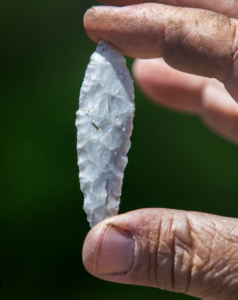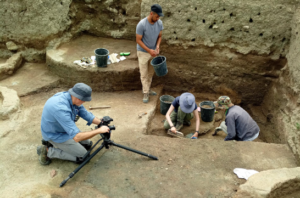
Archaeological Research Using Technology : Introduction
Over time, archaeology the study of human history and prehistory by means of excavation and artifact analysis has changed dramatically. Technology’s inclusion into archaeological study in recent years has changed the way archaeologists investigate, record and understand past civilizations. This paper explores the several technical developments that have transformed the field of archaeology and improved our knowledge of the past so safeguarding cultural legacy for next generations.
The Development of Archaeological Approaches Standard Practices
Archaeology has long depended mostly on hand excavation methods. Carefully excavating strata of dirt, archaeologists hand-documented their discoveries. Although efficient, this approach was prone to human mistake and time-consuming. New technologies have drastically altered this terrain.
The Change toward Technological Integration
Tools like Geographic Information Systems (GIS), remote sensing and 3D modeling let archaeologists more precisely and effectively do their work. Along with accelerating the digging, this change has enhanced data collecting and processing.
important Archaeological Technologies
Systems of Geographic Information : GIS
By means of GIS technology, archaeologists can produce comprehensive maps combining several kinds of data, including geography, vegetation and archeological sites. This capacity aids in the visualization of spatial relationships and patterns within the archeological record by scholars.
GIS data integration allows different information to be merged, therefore offering a complete perspective of a region.
GIS facilitates the design and management of archeological sites therefore guaranteeing improved preservation and conservation.
Archaeologists can forecast where new sites might be found by means of predictive modeling that is, by studying past data.
Methodologies of Remote Sensing
Remote sensing is the study of archeological sites without physical excavation by means of aerial and satellite images. Particularly common techniques now include LiDAR (Light Detection and Ranging).
Benefits of Remote Sensing
Non-invasive Investigating: Remote sensing lets one find spots without upsetting the ground.
Aerial surveys can rapidly cover vast areas, therefore exposing trends missed by ground surveys.
LiDAR can provide high-resolution digital elevation models, therefore exposing minute terrain details.
Three-dimensional modeling and printing
Printing and three-dimensional modeling have provided fresh paths for archaeological study and teaching. Archaeologists can better examine and distribute their results by digitally depicting sites and objects.
Three-dimensional technology’s influence
3D models help to create a more immersive experience, so facilitating the understanding of difficult objects and buildings.
3D printing may produce duplicates of delicate objects, therefore enabling study without running the danger of damage to the original.
Exhibits and online platforms allow 3D models to be used, therefore educating the public about archeological results.
Archaeological Drones
The way archaeological investigations are carried out has been transformed by drone use. Cameras and sensors on drones enable them to gather high-resolution pictures and data from far-off locations.
Applications of Drone Technology
Drones can visit difficult locations such as rocky terrain or deep forests that are off-limits by foot.
Aerial surveys carried out by drones can quickly and in great volume compile data.
Drones offer a bird’s-eye perspective of archeological sites, therefore enabling site plans and structural visualization.
Archaeogical Data Analysis
Machine learning and Big Data
Big data analytics and machine learning techniques have grown even more important as archeological study produces enormous volumes of data. These tools help spot trends and connections that would not be clear from conventional study.

Big Data Artifact Classification :
By means of feature-based artifact classification facilitated by machine learning, cataloging results can be efficiently compiled.
Predictive analytics allow academics to more precisely find possible excavation locations by examining past data.
Big data methods allow one to uncover commerce and social networks among ancient civilizations.
Digital Database and Collections
Digital databases have made it simpler for archaeologists to store, distribute, and access their material. Online archives enable worldwide archaeologists to cooperate and exchange knowledge.
Value of Digital Archives
Digital storage helps shield archeological records from physical deterioration.
Researchers can access and help to add to common databases, therefore fostering world cooperation.
Improved Research Possibilities: Digital archives let multidisciplinary studies combine archaeology with other disciplines including history and anthropology.
Ethical Issues Regarding Technology Use
Juggling History and Modernity
Although technology presents many advantages, it is important to balance these developments with conventional archeological techniques. Responsible and moral research depends on keeping a link to the past.
reverence of cultural legacy
Archaeologists have to make sure that technical approaches do not harm the integrity of their sites. This technique depends on respect of indigenous knowledge and local communities.
Environmental Consequences
Using technology in archaeology also begs issues regarding environmental sustainability. Researchers have to aim to reduce their impact and take into account the ecological consequences of their approaches.
Case Studies on Technological Innovation:
The Maya Culture
Modern developments in remote sensing have illuminated the Maya civilization in fresh ways. Thousands of hitherto unidentified buildings buried under the forest canopy have been exposed using LiDAR technologies.
conclusions and ramifications
Urban Planning: Maya city organization and layout have been clarified by the data.
Cultural Discoveries: Roads and agricultural systems have helped us to better appreciate Maya society’s environmental adaptation and depth.
Pompeii: Looking Through the Past
3D modeling and imaging techniques have let archaeologists at Pompeii recreate buildings and objects with until unheard-of accuracy.
Contributions to Knowledge
3D models have made virtual tours possible, hence increasing public accessibility of the site.
Scientific Analysis: Detailed models help to examine how volcanic ash affects buildings, therefore supporting preservation initiatives.
The Archaeological Future of Technology
New Technologies
With new technologies like augmented reality (AR) and artificial intelligence (AI) primed to transform the discipline even more, archaeology is looking forward.
Possibilities for Innovation
By layering digital information onto real-world environments, augmented reality applications AR can improve the visiting experience at archaeological sites.
Large dataset analysis, trend identification and future discovery prediction are three areas where artificial intelligence for analysis can help.
Group Methodologies
Cooperation among archaeologists, technologists, and local communities will become ever more vital as technology develops. Including several points of view helps to provide better educated and comprehensive study.
Last Thought
By including technology into archeological study, the discipline has been revolutionized and more effective data collecting, analysis, and cultural resource protection made possible. Maintaining a balance between technological innovation and conventional approaches will help us to ensure that our knowledge of the past is accurate and respectful going forward. Archaeologists can keep revealing the secrets of human history and enhancing our knowledge for next generations by adopting fresh tools and encouraging teamwork.